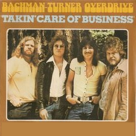Over the past four years, we’ve documented the strategic transformation of upstream oil and gas producers from growth at all costs to the fiscally conservative concentration on accumulating free cash flow to accelerate shareholder returns. Much like their upstream counterparts, midstream corporations and master limited partnerships (MLPs) have shifted to fiscal conservatism, focusing less on growth and capital investment and more on shareholder returns, acquisitions and debt reduction. In today’s RBN blog, we examine the cash flow allocation of a representative baker’s dozen of midstream companies as they compete for investor support.
Daily Energy Blog
Rumors about potential oil and gas mergers are always swirling, but the announcement of ExxonMobil’s record-breaking deal to acquire Pioneer Natural Resources a couple of weeks ago generated a fever pitch of speculation about potential matchups. In the past week, we’ve seen media reports of possible courtships between Devon Energy and Marathon Oil and then Chesapeake Energy and Southwestern Energy. However, it was Chevron that shocked the oil patch by swiping right on former integrated oil company Hess Corp., opting for a $60 billion acquisition of an E&P with no Permian Basin exposure. In today’s RBN blog, we analyze the drivers and implications of what is now the second-largest U.S. upstream transaction ever.
Ongoing M&A activity in the upstream portion of the oil and gas industry has garnered a lot of attention, most recently regarding ExxonMobil’s planned $64.5 billion acquisition of Pioneer Natural Resources. But there’s also been a lot of consolidation in the midstream space as the companies that gather, process, transport, store and export hydrocarbons seek to gain the scale, scope and synergies they think they will need to succeed in an increasingly competitive industry. In today’s RBN blog, we discuss highlights from our newly released Drill Down report on the major midstream deals of 2022 and 2023 to date.
Sometimes, courtship is better the second time around. After some previous rumors and flirting with a deal in the spring of 2023, ExxonMobil, the largest international integrated oil company, reached an agreement to acquire Pioneer Natural Resources, the largest pure-play Permian producer, for $64.5 billion, the largest-ever U.S. upstream transaction. In today’s blog, we analyze the deal that would make ExxonMobil the top Permian producer, including shifts in the focus and depth of its upstream portfolio, the integration with its existing midstream and downstream infrastructure, and its energy transition goals.
Merger-and-acquisition (M&A) activity in Canada’s oil and gas sector has accelerated this year compared to 2022. With crude oil prices generally strengthening over the course of 2023, it should come as no surprise that the focus of much of this activity has been crude oil- and NGL-producing companies and assets. As we discuss in today’s RBN blog, several large deals have been announced and many have already closed, including a complex arrangement involving Suncor and production ownership in the oil sands that only recently concluded after six months of uncertainty, with more deals expected before the year is over.
Even now, three-plus years after the start of the oil and gas industry’s biggest consolidation in a quarter century, hardly a month goes by without another major M&A announcement. Just this week, Civitas Resources said it will acquire acreage and production in the Permian from Vencer Energy for $2.1 billion. The primary drivers of these deals — many of which are valued in the billions of dollars — are clear. Among other things, E&Ps are seeking scale and the economies of scale that come with it. They also have come to believe that it makes more sense to grow production through M&A than through aggressive capital spending. And, for some producers not yet involved in the all-important Permian, acquiring even a smaller E&P there provides a foothold to build on. In today’s RBN blog, we discuss highlights from our newly released Drill Down report on the past 12 months of upstream M&A activity in the U.S. oil patch.
Rapidly rising prices for goods and services have plagued the economy since the onset of the pandemic — and led the Federal Reserve to ratchet up interest rates to help cool things off. Despite strong signs that overall inflation is receding, the negative impacts are far from over. Like every other sector, the U.S. E&P industry faced soaring costs as it struggled to restore production after widespread shut-ins in the spring of 2020. However, in recent Q2 2023 earnings calls E&P executives provided guidance that suggested that costs had not only plateaued but might actually decline in 2024 and beyond. In today’s RBN blog, we discuss updated 2023 capital spending guidance for U.S. oil and gas producers and their early outlook for 2024 investment.
Is the glass half-full or half-empty? The answer to that age-old question usually indicates whether a particular situation is a cause for optimism or pessimism. That question is particularly appropriate when trying to place in perspective the cyclical movement of the earnings and cash flows of U.S. exploration and production (E&P) companies, including returns that have steadily declined with commodity prices over the last year. In today’s RBN blog, we analyze Q2 2023 E&P earnings and cash flows and provide some perspective on the past and future profitability of U.S. oil and gas producers.
The M&A boom in the Permian and Eagle Ford continues unabated. Lately, a multitude of E&Ps have built scale and increased profitability by acquiring other producers that control acreage and produce crude oil, natural gas and NGLs themselves. But it’s also possible for an E&P to boost its holdings by acquiring incremental working interests in its operated assets or by having an affiliate acquire royalty and mineral interests in acreage the producer plans to develop. In today’s RBN blog, we discuss the most recent M&A activity in two of the U.S.’s leading production areas, including Viper Energy Partners’ planned $1 billion purchase of mineral and royalty interests in the Permian; Crescent Energy’s plan to acquire incremental working interests in South Texas; and an old-school, bolt-on acquisition by Magnolia Oil & Gas, also in the Eagle Ford.
What a difference a year makes! The summer of 2022 was a golden age for U.S. E&Ps that embraced a dramatic shift in their business model from prioritizing growth to a focus on maximizing cash flows and emphasizing shareholder returns. Oil prices over $90/bbl and gas prices hovering about $7/MMBtu filled their coffers and funded lavish increases in share repurchases and dividends. But those golden days quickly faded as oil prices retreated and gas prices plunged 66% to just above $2/MMBtu. In today’s RBN blog, we explain how E&Ps are scrambling to sustain shareholder return programs in the face of shrinking cash flow.
It’s only natural that deals like Chevron’s $7.6 billion acquisition of PDC Energy and ExxonMobil’s $4.9 billion purchase of Denbury grab the market’s attention. After all, the buyers are names known to everyone — even those who only think about hydrocarbons when they’re filling up at their local gas station. But a lot of other, lower-profile M&A action is happening too, especially in the Permian and also in the Eagle Ford. You might say these are cases of “Eat or be eaten” — or, in one recent case, “Eat and be eaten.” In today’s RBN blog, we discuss the plans by Permian Resources to acquire Earthstone Energy; Civitas Resources to buy assets in the Permian’s Delaware and Midland basins from Tap Rock Resources and Hibernia Resources, respectively; and SilverBow Resources to scoop up Chesapeake Energy’s last remaining assets in the Eagle Ford.
Over the past four years, Energy Transfer (ET) has completed several major acquisitions, all aimed at giving the company the additional size and reach it will need to compete in an increasingly consolidated midstream sector. On Wednesday, ET announced one of its biggest purchases yet: a $7.1 billion deal to acquire Crestwood Equity Partners, which has extensive gathering and processing assets in the Permian, Powder River and Williston basins, as well as NGL terminal and storage facilities east of the Mississippi. In today’s RBN blog, we look at how the addition of Crestwood’s holdings will extend ET’s value chain and complement its fractionation assets at Mont Belvieu and its export capabilities at both its Nederland and Marcus Hook terminals.
Unlike most of us, CEOs and other senior executives at U.S. oil and gas companies derive the lion’s share of their compensation not from salaries, but from bonus and incentive programs tied to performance targets set by their boards of directors. So it’s no surprise that the dramatic strategic shift implemented by U.S. E&Ps and integrated energy companies over the last decade has been steered by an equally dramatic change in their compensation incentives. In today’s RBN blog, we review how top executives at oil and gas companies are compensated and analyze the shift in the incentives they are motivated to meet.
On average, the landowners and other entities that own mineral and royalty interests in producing oil and gas wells receive about 20% of the gross revenues generated by those wells — and do so without any responsibility for the significant costs and complications associated with well development and production. Mineral and royalty interests have traditionally been a highly fragmented market, with most held and passed down through generations by landowners or purchased by individual investors. However, competition for these interests has become more heated in recent years with the creation of large publicly owned and private-equity-funded consolidators and a new emphasis by E&P companies on adding these higher-margin slices of revenue from leases they own and operate. In today’s RBN blog, we explain mineral and royalty interests and analyze the developments in this massive $700 billion market.
The wave of Permian corporate consolidations has continued unabated as spring transitioned into summer with the public company purchases of two EnCap-funded Delaware Basin private operators: Forge Energy, which was purchased by Vital Energy for $540 million, and Novo Oil & Gas, which was purchased by Earthstone Energy for $1.5 billion. Although the theme hasn’t changed, the funding of the transactions includes an intriguing new element — Northern Oil & Gas, which primarily invests in non-operated minority interests, partially funded the acquisitions by agreeing to take 30% and 33% interests in the assets from buyers Vital Energy and Earthstone Energy, respectively. In today’s RBN blog, we review the emergence of three public non-op-focused E&Ps — Northern Oil & Gas, Granite Ridge Energy and Vitesse Energy — and their recent evolution from consolidators of asset packages to trusted partners of acquisition-focused operators.

















